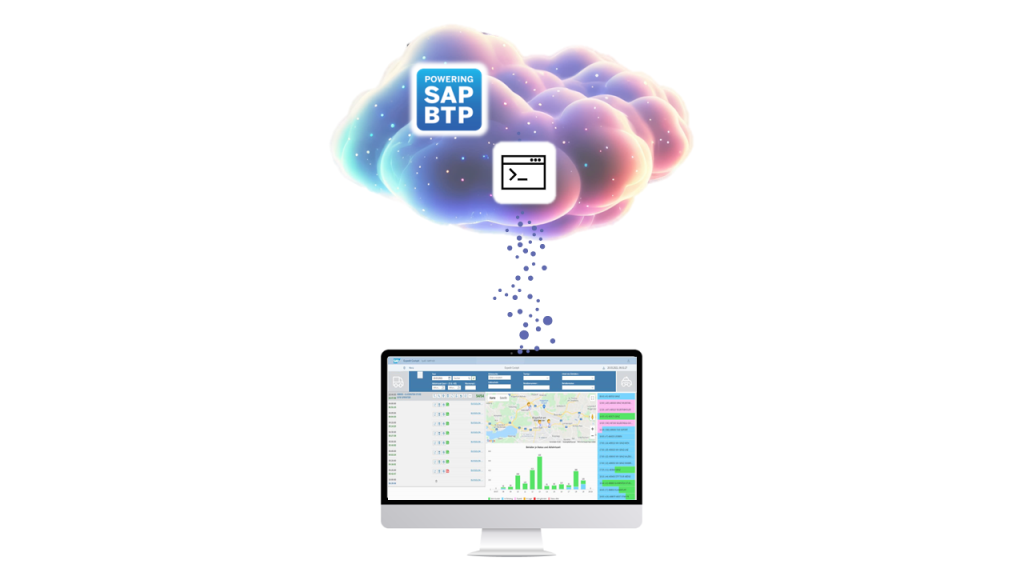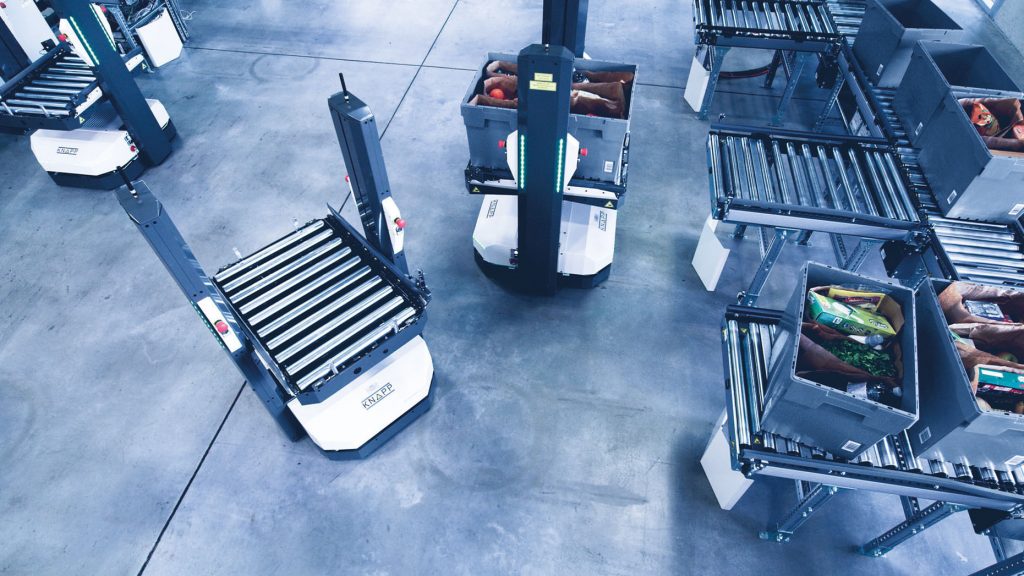In a world where speed and the ability to adapt are decisive for success along the value chain, you might wonder: How can companies remain agile and take dynamic action while designing their IT landscape to be future-proof? For any company banking on an SAP® IT strategy, SAP BTP is the key. We took a closer look at what’s behind this SAP® applications platform and how SAP BTP Services can be used to design logistical processes to your advantage.
SAP Business Technology Platform:
One platform, multiple options
SAP BTP stands for SAP Business Technology Platform and is an innovation platform geared towards SAP® cloud applications. Based on the Platform as a Service principle (PaaS), this comprehensive cloud computing model offers SAP® customers a digital space for seamlessly connecting solutions for application development, automation, data analysis, integration and AI to an SAP® system through standard interfaces. The fact that you can include SAP®-made or third-party extensions also means that you can integrate your own developments into an SAP® landscape as SAP BTP Services, both in SAP®’s programming language ABAP or in other programming languages such as Java and Python. Essentially, SAP BTP provides a base for embedding various solutions in a hyperscaler cloud, hybrid or on-premise environment into an existing SAP® process map end-to-end – flexibly, quickly and simply.
The world of software as a service:
SaaS, IaaS und PaaS
3 in 1: Benefits of SAP BTP
Clean core: Tidy software architecture
Easy integration: Efficient processes
AI and micro services: Focus on innovation

SAP BTP Services for warehouse management
As you can see, SAP BTP has numerous advantages. But how can it benefit logistics? With SAP BTP Services, you have everything at hand from analyses and AI to app development, automation and integration, all in a single environment. Let’s have a look at some specific use cases in logistics.
All-in platform: Integrate automation technology with SAP BTP
Expanding with automation technology always bears a certain risk when it comes to embedding it in your existing SAP® systems. It can affect software solutions and code, regardless of whether the original implementation partner or a new SAP® provider carries out the adaptations.
However, with SAP BTP, you can implement new applications seamlessly and maintain a clean core – no far-reaching changes required. This allows you to continue using your existing IT systems and thanks to the PaaS environment of SAP BTP, the required developments are all in one place and can be connected to the SAP® system using standardized services. Simplified regression tests in the existing SAP® system make it possible to implement your applications faster, more flexibly and with lower risk, significantly improving project execution planning.
At KNAPP, we offer SAP BTP Services for the integration of a range of simple automation technologies, such as our Open Shuttle AMR system or InduStore automated picking system.

AI included: Smart process optimization with SAP BTP Services
SAP BTP offers a range of options for the targeted use of generative artificial intelligence, including pre-developed AI services for recurring business scenarios and tools for managing data as well as for developing and effectively managing intelligent applications.
In logistics, there are many ways AI can help. Due to the increasing complexity caused by a number of known and sometimes unanticipated factors influencing everyday logistics processes, designing process logic has become all the more difficult. But this is where AI comes into play. After creating an AI model using historical data, it provides valuable support to operations managers in their day-to-day work by helping them make decisions. At KNAPP, for instance, we have offered solutions for ideal slotting and optimizing order start in picking for quite some time.

For allocating storage locations, AI models not only factor in classic parameters such as rotation and storage capacity, but also the seasonal demand for specific goods, including weekly fluctuations due to holidays, for instance. When it comes to starting orders, the right timing is crucial to improving picking performance and reducing the overall transit time in the warehouse. AI models can help as they use the data collected while continuously monitoring the manual and automated picking areas’ capacities, thereby ensuring that orders are ideally sequenced, which improves the utilization of resources, picking times, lead times and other critical factors.
The SAP BTP Services are based on the basic AI services, which are available in SAP BTP as customized and pre-trained services. The AI services are integrated into the SAP® system landscape according to the business case. While the clean core strategy is at the forefront in slotting, order start logic needs go deeper into the logistics processes and procedures. Instead of mapping or replicating the order start logic in SAP BTP, the customized AI-based SAP BTP Services are seamlessly interlinked with the order start logic in SAP® EWM, providing next-level optimization. Rounding out the solution are dashboards depicting warehouse performance and maintenance, which are also supported by AI.
Warehouse management:
Better off with SAP BTP Services or SAP® EWM?
Our range of KNAPP solutions on SAP BTP is continually growing, not only for the integration of automation technologies but also with regard to logistics services that you can include in your value chain seamlessly. However, this development does not mean that SAP® software modules will soon become obsolete. On the contrary, they are as relevant as ever, even though the three advantages of SAP BTP – clean core, easy integration and availability of micro services (including AI) – might make you think otherwise. In actual fact, SAP BTP Services offer clever ways to extend SAP® software modules such as SAP® EWM. ERP systems, WMS and WCS will never be replaced in their entirety, but SAP BTP Services reduce risk when extending modules and embed artificial intelligence in everyday operations.
Do you have specific logistics requirements for extending your SAP® systems? Get in touch with us and together we will find the best solution for you!
Further reading recommendations

What are 11 questions should you absolutely ask yourself before carrying out an SAP® EWM implementation project? Read on and find out in this blog post.

Which software solution is right for you and your warehouse? An end-to-end SAP® EWM environment or a separate KiSoft Solution? Or possibly even the best of both worlds? We introduce you to all the possible combinations so you can discover the system that fits your processes perfectly.

Our solution in S/4HANA Cloud, private edition, processes 450,000 SAP® EWM MFS telegrams each hour. Don’t believe us? Read our blog to find out how we do it.
